6 Best Kettlebell Squat Variations (with Pictures!)
The kettlebell squat is best known for being highly convenient and accessible, even for individuals with no previous training experience.
However, like most other types of squat, the kettlebell squat is only the beginning. Quite a number of further variations exist - each building upon the veritable benefits of this seemingly simple exercise, all of which are perfect for the higher levels of resistance training.
Though the conventional kettlebell squat is best for general training purposes, exercises like the goblet squat or kettlebell sumo squat are great for targeting certain muscle groups to a greater degree. Likewise, overhead squats and swing squats turn the exercise into a full-body workout.
What are Kettlebell Squats?
Kettlebell squats are a closed chain compound exercise performed so as to build strength, muscle mass and athleticism throughout the lower body.
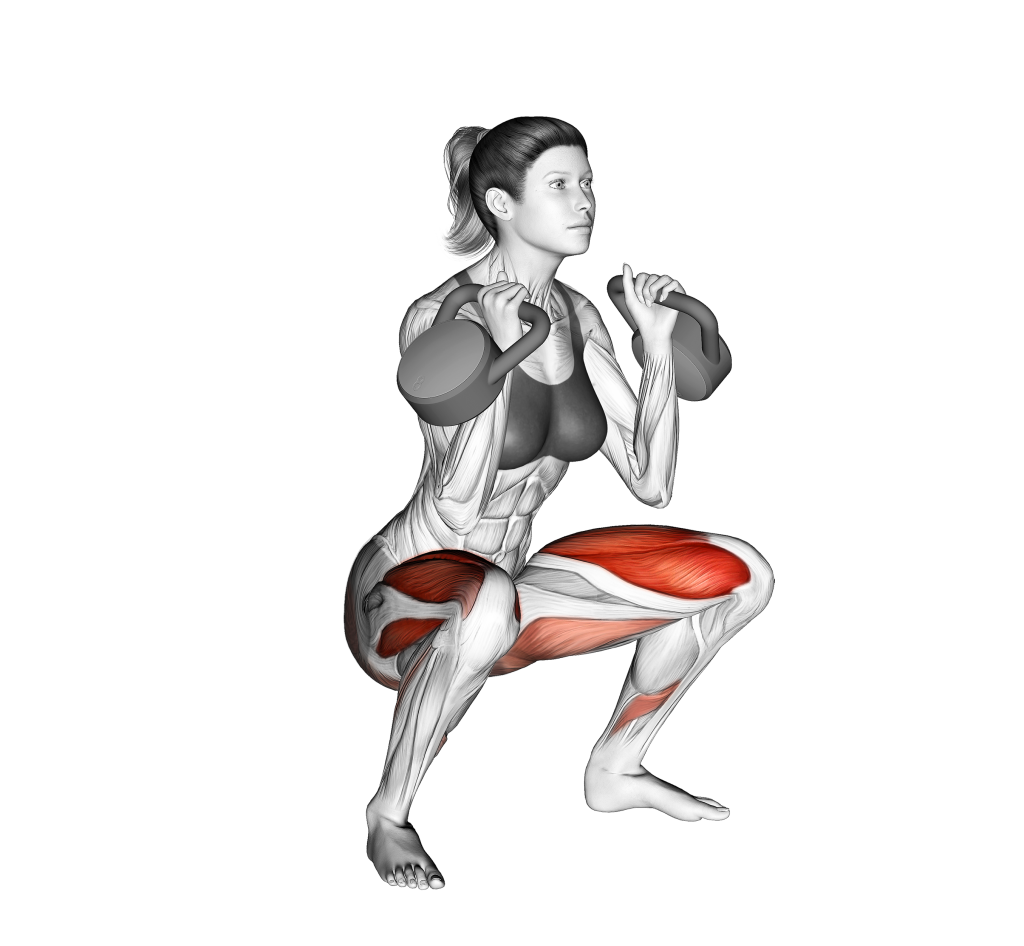
The majority of kettlebell squat variations alter either the position of the lifter’s legs or the manner in which the kettlebells themselves are gripped.
Because of how broadly reaching the term “kettlebell squat” can be, lifters may occasionally refer to a front-racked kettlebell squat, goblet kettlebell squat or side-loaded kettlebell squat as simply “kettlebell squats”.
These exercises are not quite the same however, and will emphasize different muscle groups depending on where the kettlebell is actually placed.
Kettlebell Squat Variations
1. The Conventional Kettlebell Squat
The conventional form of kettlebell squat has the lifter holding a pair of kettlebells either at both sides of the body or raised up at approximately shoulder-height, bells resting atop the forearms.
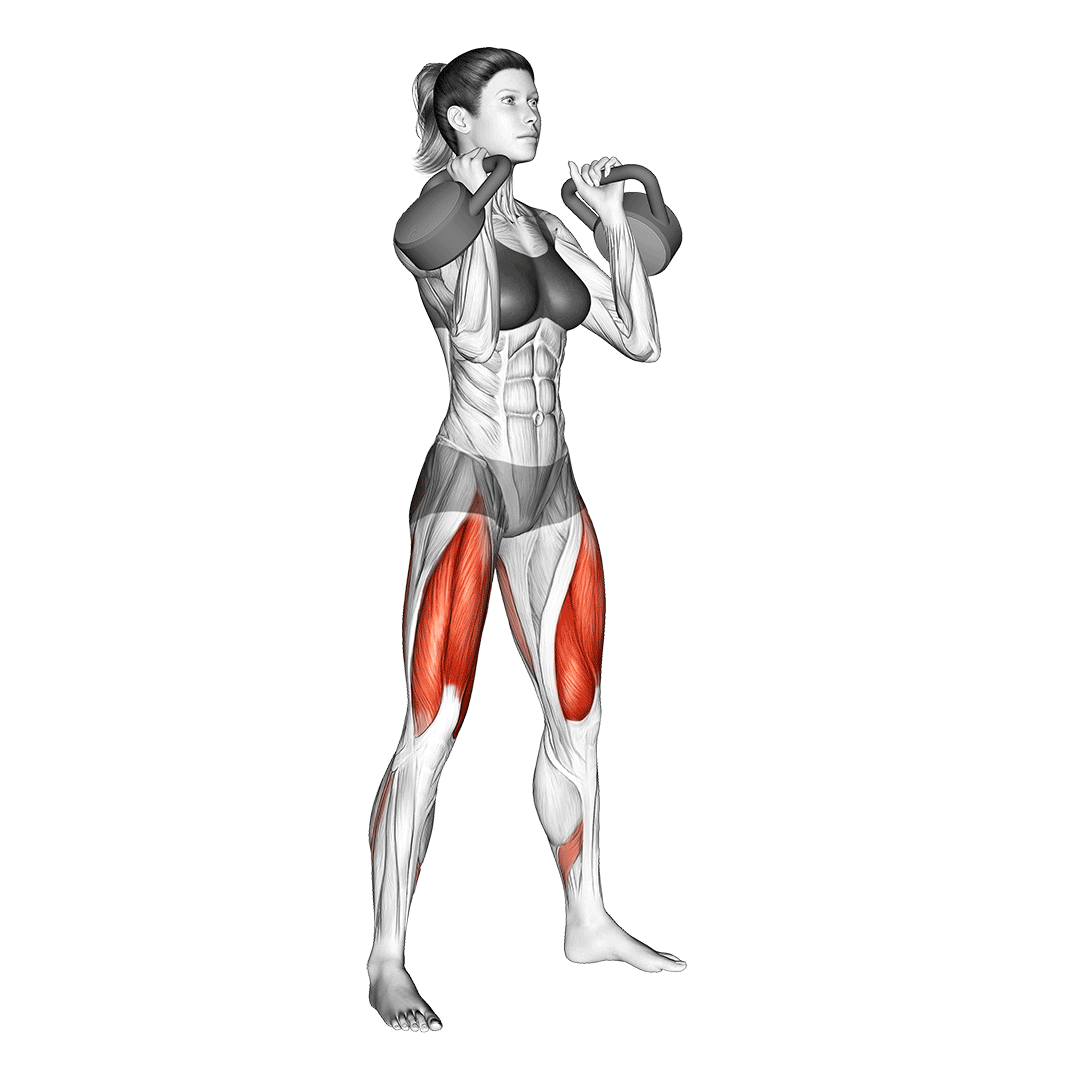
Conventional kettlebell squats otherwise follow much the same mechanics and movement pattern as the natural human squatting motion. When performed, use of hip flexion and knee flexion will allow the lifter to lower themselves to a parallel depth, often with the feet around shoulder-width apart.
The conventional kettlebell squat is most often performed as an introductory exercise by novices, or as a method of targeting every muscle in the lower body for general training and development purposes.
Note that the kettlebell squat and the kettlebell goblet squat are two separate exercises, much to the confusion of many.
As the latter’s name implies, goblet squats involve holding a kettlebell in both hands at chest level. This is distinct from the manner in which regular kettlebell squats are performed, with the latter featuring a less vertical torso.
Muscles Worked
Regular kettlebell squats will develop the quadriceps, glutes and hamstrings in equal measure.
In addition, the core musculature will also be isometrically recruited - with the erector spinae playing a greater role if the kettlebells are racked above the shoulders.
Defining Benefits as a Kettlebell Squat Variation
Conventional kettlebell squats are excellent as a baseline introduction to squatting exercises as a whole. Their inherent level of simplicity, lack of specificity and ease of programming creates the perfect exercise for general lower body training and development.
How-to:
To perform a regular kettlebell squat, the lifter will begin by either gripping a pair of kettlebells at their sides or swinging them up to shoulder-height, pointing the palms at each other with the kettlebells resting on the back of the wrists and forearms.
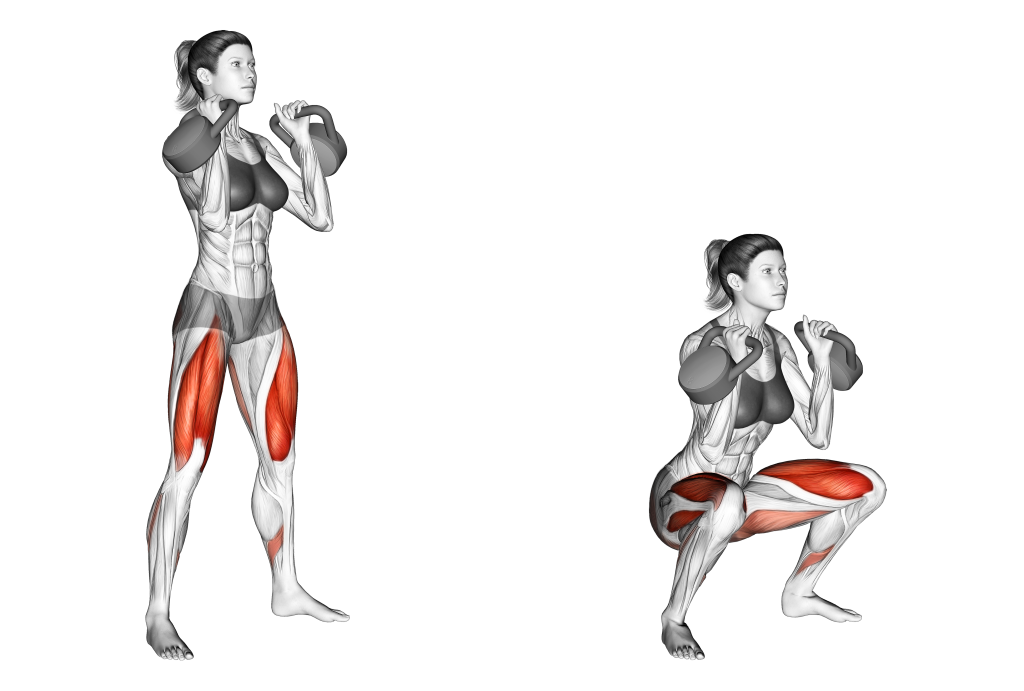
Once the kettlebells are positioned correctly, the lifter sets their feet around shoulder-width apart, braces their core and pushes their pelvis back.
As they hinge at the hips, the lifter will bend their knees - lowering themselves until the crease of the hip is parallel to the top of the knees.
Once at this depth or lower, the lifter drives through their heels and rises back to a standing position. This completes the repetition.
2. The Kettlebell Goblet Squat
As mentioned in the previous section, the kettlebell goblet squat is a conventional kettlebell squat performed with a kettlebell held at chest height in both hands.
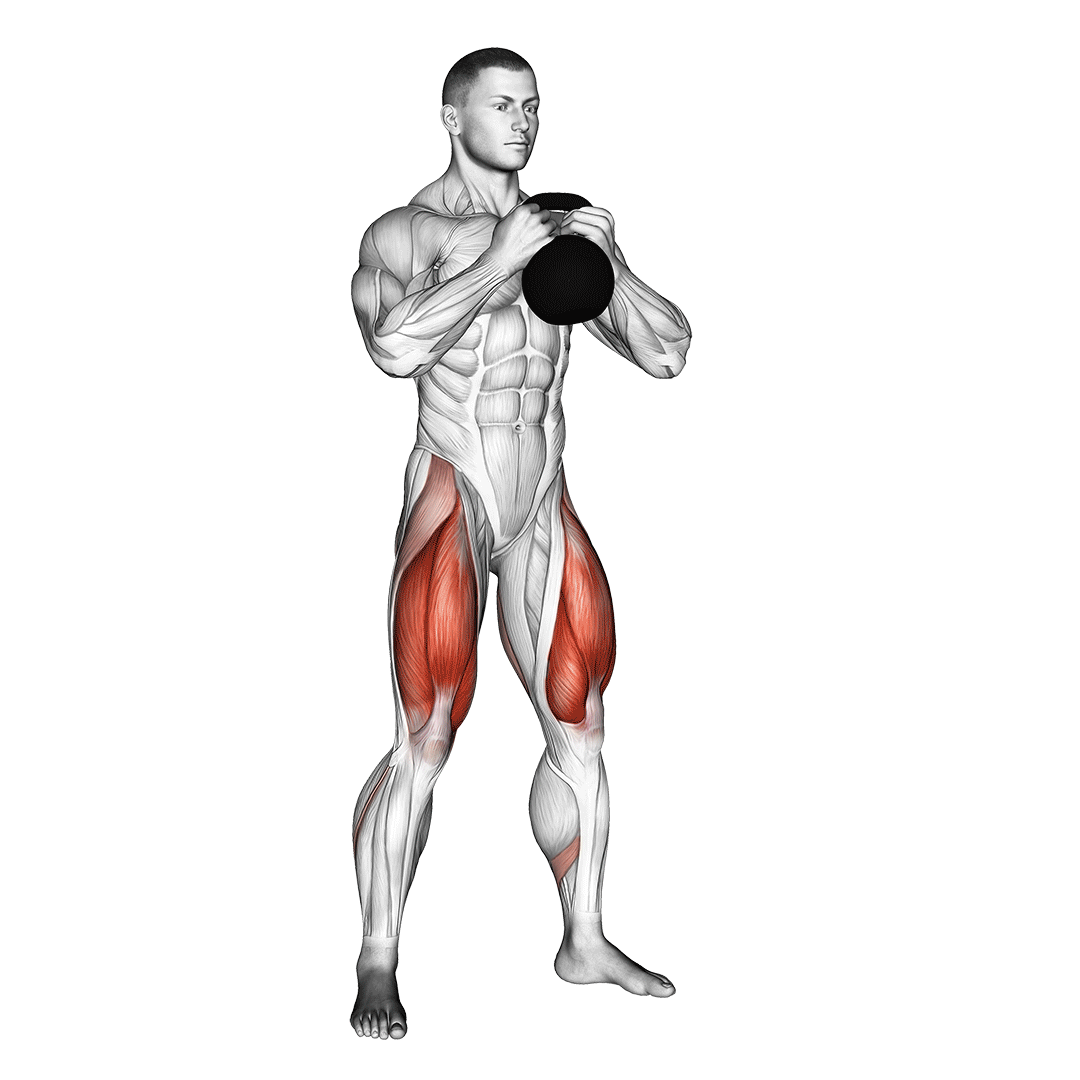
This forces the muscles to work harder to keep the torso upright, and calls for somewhat greater quadriceps recruitment due to the anterior loading present.
Otherwise, kettlebell goblet squats are much the same in terms of mechanics and lower body stance as regular squats. Shoulder-width foot positioning, hip and knee flexion and at least parallel depth are all shared between the goblet squat and its conventional cousin.
Muscles Worked
The goblet squat emphasizes the quadriceps muscles more than the glutes and hamstrings.
Furthermore, in comparison to regular kettlebell squats, goblet squats feature greater core contraction.
Defining Benefits as a Kettlebell Squat Variation
The main benefit of the goblet squat is its somewhat more intense recruitment of the core and quads. Otherwise, the exercise retains much the same benefit as regular kettlebell squats.
How-to:
To perform a kettlebell goblet squat, the lifter will raise a kettlebell up to chest height in both hands, palms facing each other. The shoulders should remain squared with the chest upright and the core braced.
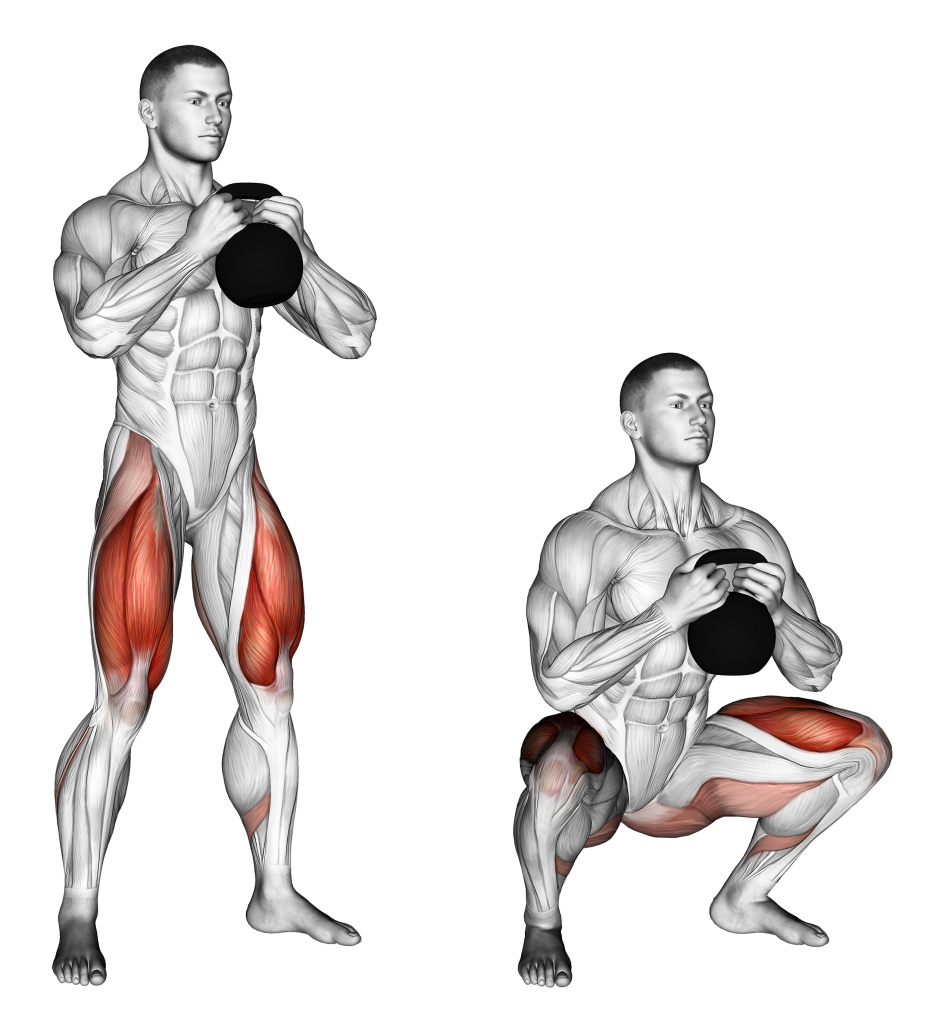
Setting the feet slightly wider than they would a regular squat, the lifter will then push their hips back and bend at the knees, lowering themselves until they’ve reached parallel depth or lower.
Additional attention should be paid to ensure the torso is as vertical as possible throughout the set.
From this depth, they then drive through their heels and rise back up to a standing position. This completes the repetition.
3. The Kettlebell Sumo Squat
The kettlebell sumo squat is a variation featuring a comparatively wider stance and more outward toe angle. Positioning the lower body in this manner allows the lifter to better emphasize the adductor muscles alongside the remaining posterior chain musculature.
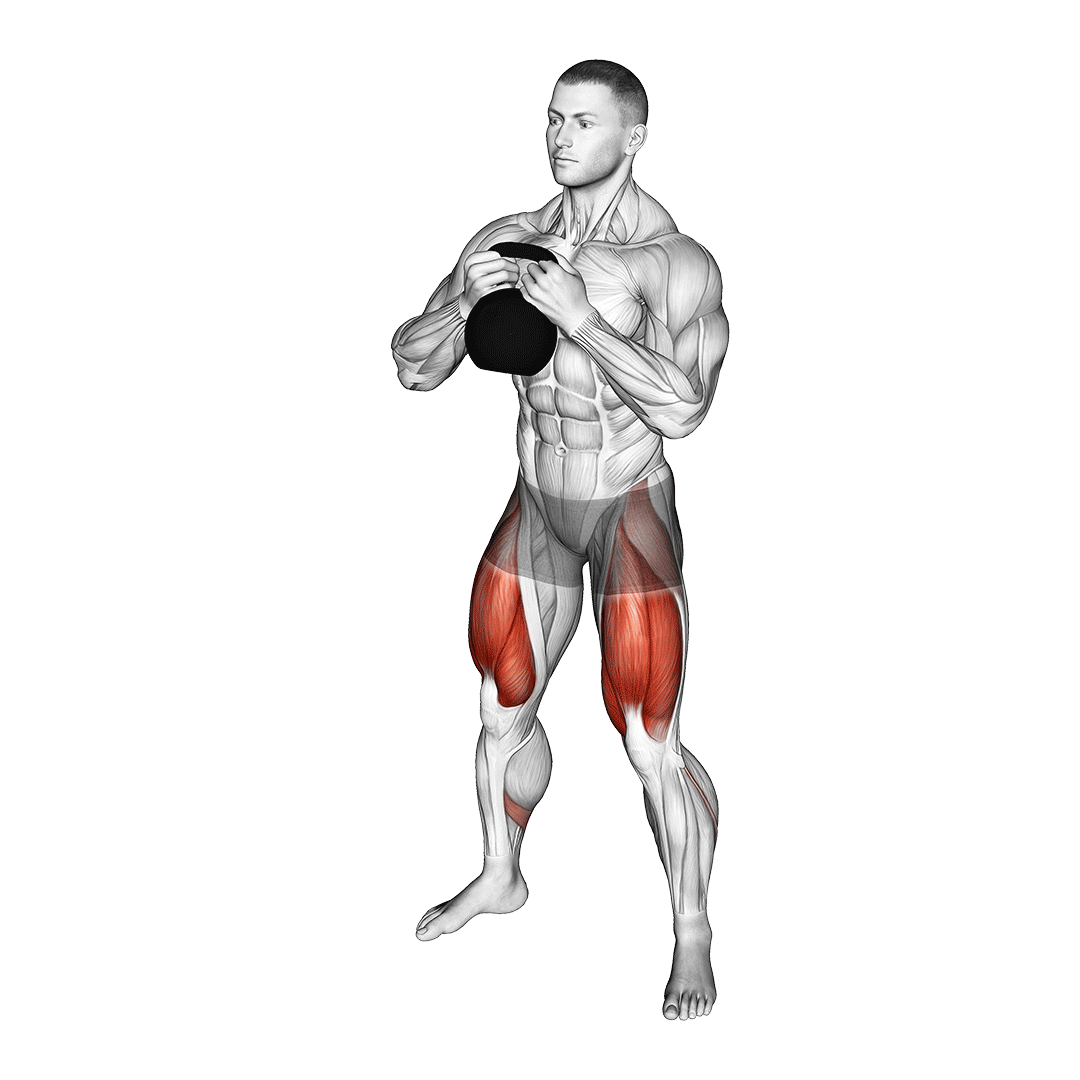
Like conventional sumo squats, the kettlebell variation is less often performed as the main form of squat in a workout.
Instead, it is used either as a supplementary exercise to regular squats or otherwise as an alternative in cases where a narrower stance can aggravate an injury.
Regardless of its purpose within a training program, the kettlebell sumo squat is mechanically quite similar to that of most other squat variations - only with a shorter range of motion and a wider stance.
Muscles Worked
Kettlebell sumo squats emphasize the glutes, hamstrings and adductor muscles. Alongside these, the quadriceps and core are also worked to a lesser extent.
Defining Benefits as a Kettlebell Squat Variation
The main benefit to performing kettlebell sumo squats is its greater emphasis on the adductors and posterior chain muscles.
In addition, although somewhat hampered by the kettlebells themselves, the shorter range of motion involved equates to a greater loading capacity. Lifters will easily be able to lift more than they are able to with other kettlebell squat variations.
How-to:
To perform a repetition of the kettlebell sumo squat, the lifter will first grip a heavy kettlebell in the goblet stance. Then, they will set their feet wider than shoulder-width apart, toes pointing slightly outwards in alignment with the knees.
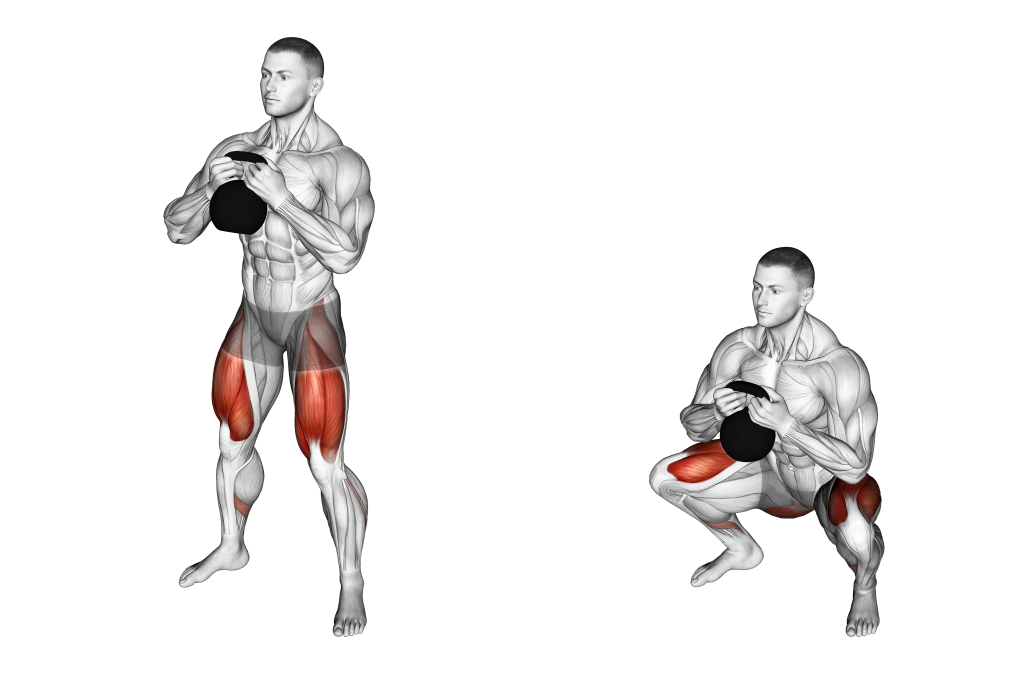
Bracing the core, the lifter then pushes their pelvis downwards and backwards, following the movement with their knees once the hips are sufficiently low enough.
Once the thighs are parallel to the floor, the correct depth has been reached.
From this point in the repetition, the lifter will drive through their heels and extend back into an upright position - completing the rep.
4. The Kettlebell Overhead Squat
Kettlebell overhead squats are a variation combining aspects of both overhead presses and conventional kettlebell squats. This allows lifters to target both their upper and lower body in a single fluid exercise, building functional capabilities and saving them time in the gym.
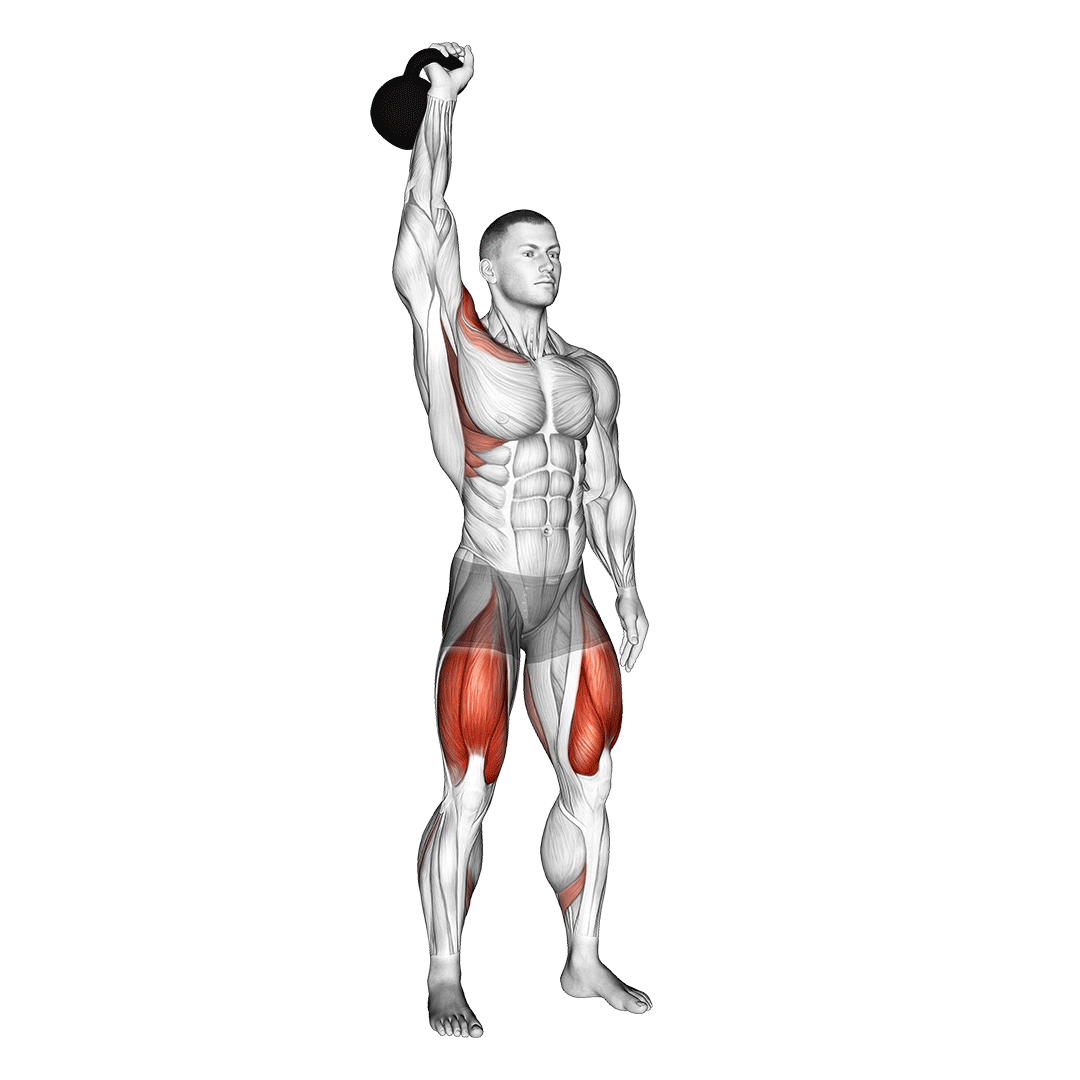
Because of the difficulty maintaining a weighted overhead arm extension while performing a squat, kettlebell overhead squats are considered an advanced exercise and should be treated as such.
Muscles Worked
The kettlebell overhead squat will target the triceps, deltoids and trapezius alongside the quadriceps, glutes and hamstrings.
In addition, its stabilizer muscles include the core, pectorals, serratus and erector spinae.
Defining Benefits as a Kettlebell Squat Variation
As mentioned previously, kettlebell overhead squats are excellent for building functional fitness and athletic prowess.
By targeting both the upper and lower body simultaneously, athletes and functional lifters will be able to develop not only strength and muscle mass, but also coordination, balance and technical skill.
In addition, lifters performing the kettlebell overhead squat as part of a superset, training drill or circuit can subtract a deltoid exercise already present in the training order - further saving them time.
How-to:
To perform a kettlebell overhead squat, the lifter begins by first securing the kettlebells overhead.
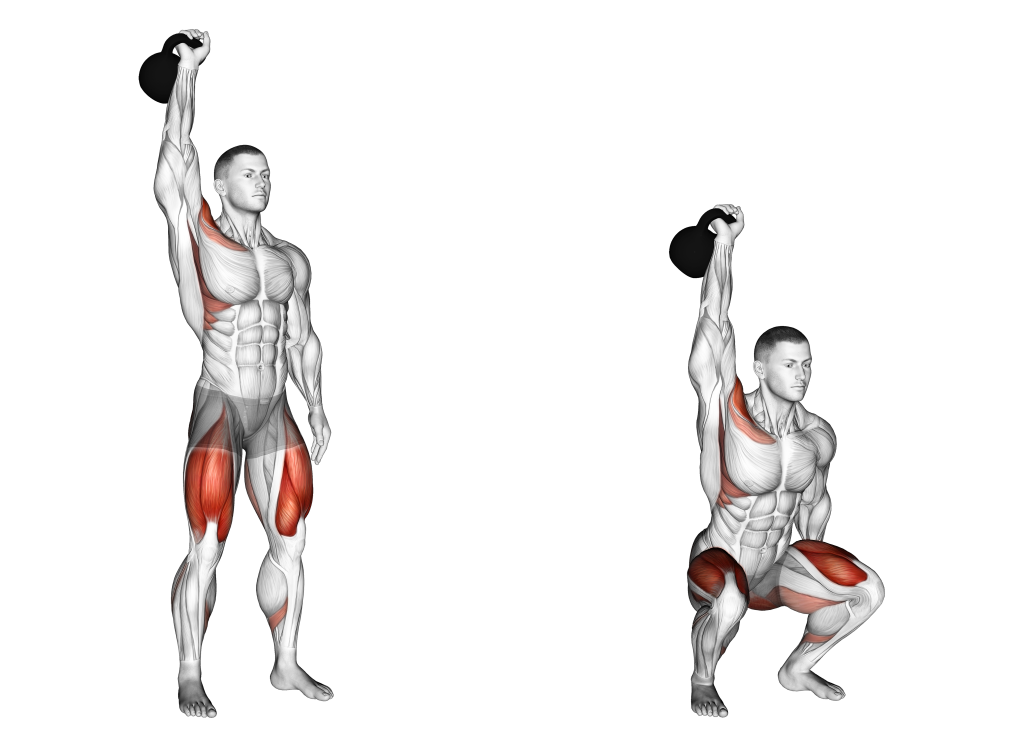
To do so, the lifter holds the kettlebell (or kettlebells) in both hands, allowing the bells to rest against their forearm as the palms face forwards. Held in this manner, the lifter will press them overhead, ensuring their upper arm is aligned with the shoulders.
Keeping the kettlebells overhead, the lifter then proceeds to perform a squat by setting their feet shoulder-width apart and pushing their pelvis back, bending the knees as they do so.
Once reaching parallel depth, the lifter then drives through their heel and rises back to a standing position, kettlebells still raised overhead. This completes the repetition.
Subsequent repetitions do not require the lifter to press the kettlebells overhead again - simply keep them extended throughout the set.
5. The Kettlebell Swing Squat
Kettlebell swing squats are a highly dynamic variation that target certain upper body muscles alongside the usual worked by kettlebell squats.
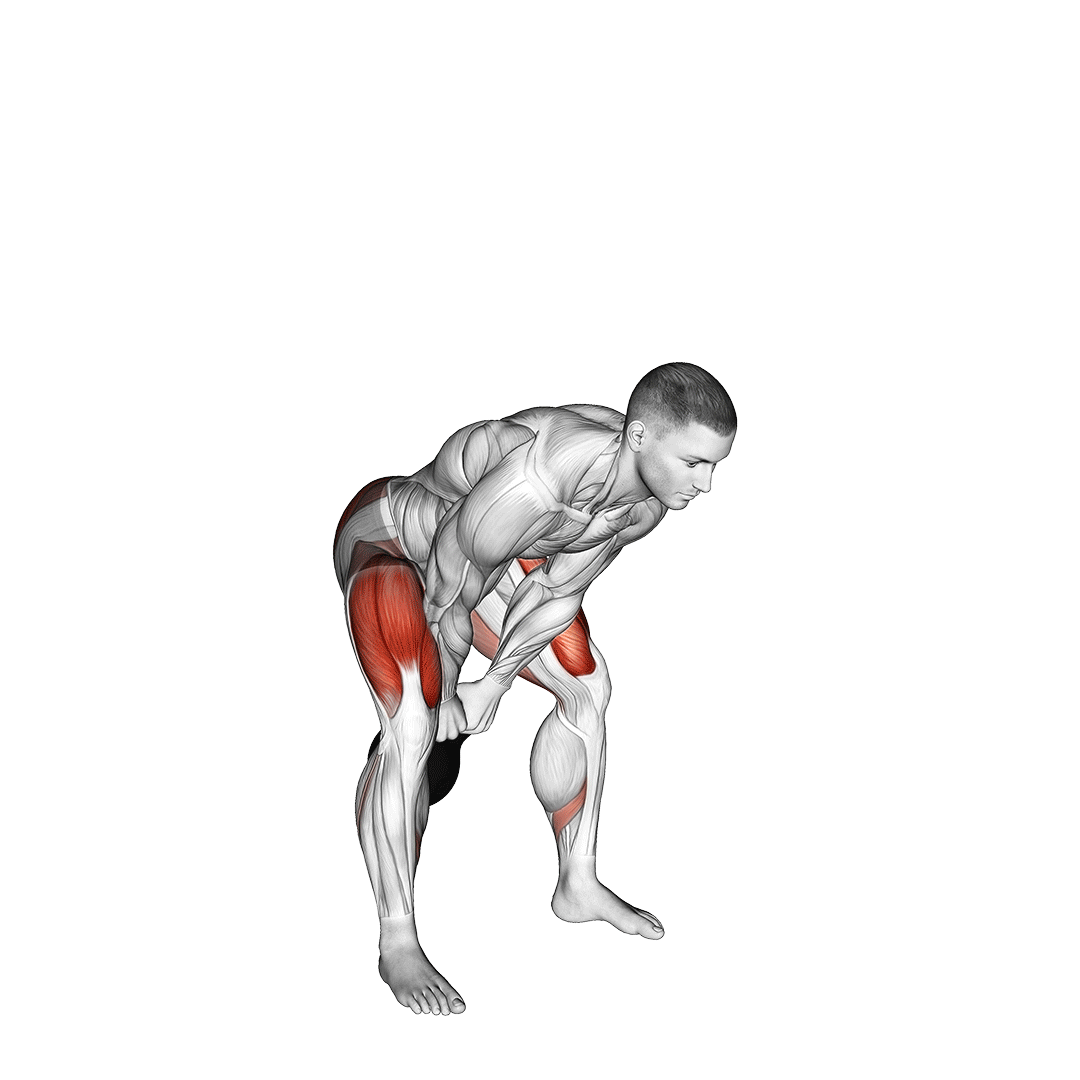
The swing squat is most often performed so as to build explosiveness and power throughout the entire body, aiding in athletic activity and directly carrying over to exercises like the deadlift or barbell snatch.
Because the kettlebell swing squat can be potentially injurious when performed incorrectly, it is best to first master both the kettlebell swing and the conventional kettlebell squat prior to attempting the swing squat.
Muscles Worked
Kettlebell swing squats target the quadriceps, hamstrings and glutes alongside the deltoids and triceps brachii.
Of course, the usual stabilizer muscles of the erector spinae and core are worked as well.
Defining Benefits as a Kettlebell Squat Variation
The defining benefit of kettlebell swing squats is its capacity to build explosiveness, strength and power throughout the body. In particular, these aspects are developed the most in the hips, of which is the main source of movement throughout the exercise.
Hip drive is utilized in practically any heavy lower body exercise, be it back squats or an Olympic long jump.
How-to:
To perform a kettlebell swing squat, the lifter will begin by first placing their feet slightly wider than shoulder-width apart, gripping a kettlebell in both hands by the handle.

The starting stance of the exercise begins with the kettlebell lowered between the legs, the hips and torso hinging forwards so as to create space for hip extension. The core should be braced and the spine neutral as this stance is assumed.
Now correctly positioned, the lifter rapidly pushes their hips forwards, extends their knees and swings the kettlebell upwards, keeping their elbows loose but extended.
This should raise the kettlebell up to approximately chest height, where the lifter will arrest its momentum as they enter a standing position.
Now standing, the lifter then pushes their hips back once more and bends at the knees, lowering themselves into a full squat with the kettlebell still held at the front of the torso.
Upon reaching parallel depth or lower, the repetition is considered complete.
6. The Kettlebell Lateral Squat/Side Squat
The kettlebell lateral squat - also known as kettlebell side lunges - are a variation used to target the adductor muscles and hamstrings in a unilateral manner.
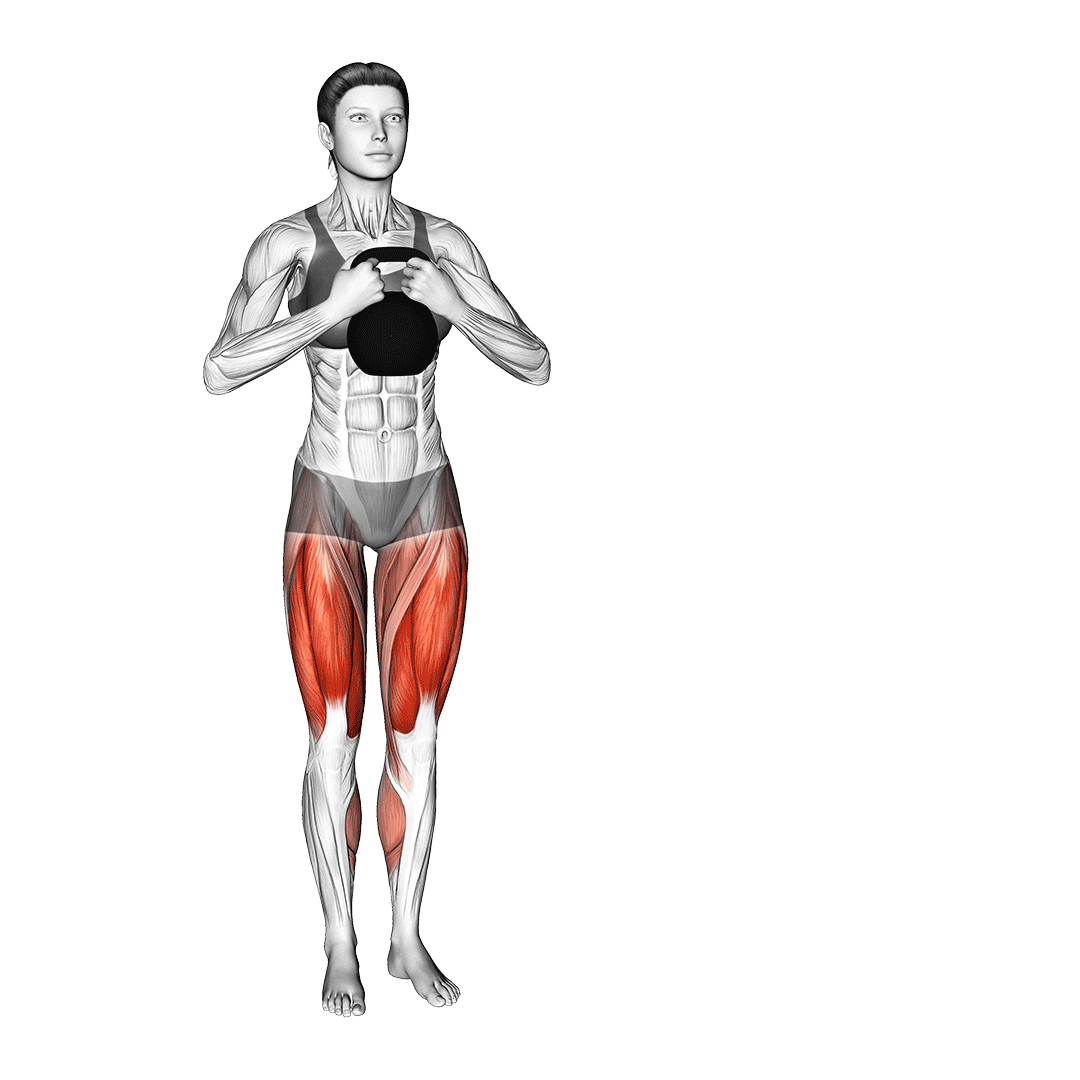
As one can guess from its name, rather than lowering the pelvis back and downwards, the lifter instead lowers to one side as the opposite leg extends to the side. This allows for greater focus on one side of the body, as well as recruitment of muscle groups that are normally underutilized by other squat variations.
Muscles Worked
Kettlebell side squats target the adductors and remaining lower posterior chain musculature to great intensity. In addition, the quadriceps of the bent leg will also be worked.
Defining Benefits as a Kettlebell Squat Variation
Kettlebell lateral squats are excellent for strengthening the adductor muscles or emphasizing the posterior chain on one side of the body.
Being a unilateral exercise, less weight will be needed to make the exercise challenging. Furthermore, a few additional benefits like greater balance and correction of muscular imbalances are also included.
How-to:
To perform a kettlebell lateral squat, the lifter first begins in a standing position with a kettlebell held at chest-height, feet set shoulder-width apart.
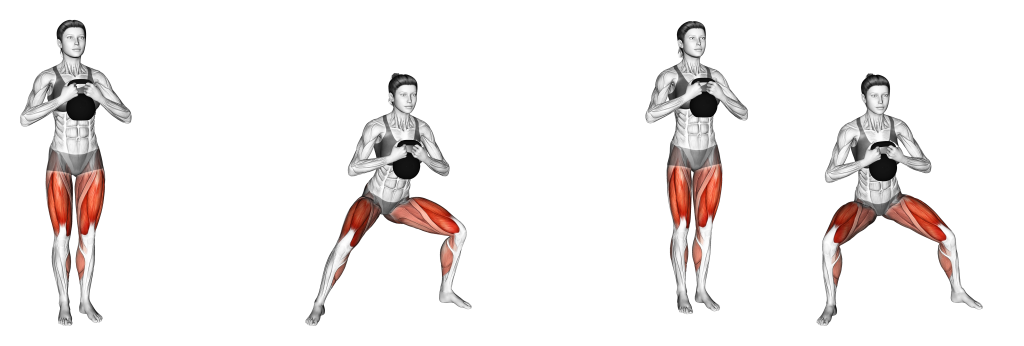
Then, keeping both feet facing forwards, the lifter will lower themselves towards one individual leg by bending the knee and shifting their weight towards the same leg. The opposite leg should remain extended and rotate at the hip, forming a diagonal line from foot to pelvis.
Once the bent leg’s thigh is parallel to the floor, the lifter will reverse the motion and return to their original standing position. This completes the rep. Repeat with the opposite side.
Which Kettlebell Squat Variation Should You Pick?
With how many variations of kettlebell squat are out there, deciding on the right one can be difficult.
Although it is indeed true that the conventional kettlebell squat is the best in terms of general development - if your needs are more specific, its likely that regular squats just don’t cut it.
In such cases, it is best to pick a variation that fits the specific training stimulus you need.
Weak adductor muscles call for lateral squats. Difficulty with a narrow stance requires a sumo squat. Likewise, athletes and functional lifters can take advantage of the swing squat.
If none of the exercises listed in this article meet your needs, it is possible to look outside of strictly kettlebell squat variations. Try out barbell squat variations or the many different forms of lunge.
References
1. Collins, Kyle S et al. “Differences in Muscle Activity and Kinetics Between the Goblet Squat and Landmine Squat in Men and Women.” Journal of strength and conditioning research vol. 35,10 (2021): 2661-2668. doi:10.1519/JSC.0000000000004094
2. Lorenzetti S, Ostermann M, Zeidler F, Zimmer P, Jentsch L, List R, Taylor WR, Schellenberg F. How to squat? Effects of various stance widths, foot placement angles and level of experience on knee, hip and trunk motion and loading. BMC Sports Sci Med Rehabil. 2018 Jul 17;10:14. doi: 10.1186/s13102-018-0103-7. Erratum in: BMC Sports Sci Med Rehabil. 2020 Jan 29;12:7. PMID: 30026952; PMCID: PMC6050697.
3. Kettlebell Exercise Encyclopedia VOL. 4: Kettlebell squat, swing, and windmill exercise variations. N.p.: Taco Fleur, 2019. ISBN: N/A (Published via KDP)
